
Before we get into the major mistakes and steps to avoid them let’s first have a quick overview of the requirements analysis phase.
The requirement analysis phase is one of the important phases of the systems development life cycle (SDLC). In this phase, all the necessary information regarding a project is gathered. Moreover, the expectations, needs, and end goals are clearly defined and documented.
As it holds special importance in the SDLC, many people may struggle with this phase. Read out to know what those mistakes are and how they can be resolved.
Common Pitfalls And Mistakes To Avoid In Requirement Analysis
The requirement analysis phase is quite tricky and challenging and the chances of errors are probably very high. If not corrected timely these errors could delay project time, overrun the project budget, or affect the end goals.
In this blog, we will highlight the common mistakes one could make in the requirements analysis phase. We will also discuss strategies that help overcome those mistakes.
Unclear Plans and Ambiguous Requirements
The very first mistake that most people make in requirement analysis is not planning properly and ignoring ambiguous requirements.
When the requirements are not clearly defined it leads to confusion, conflicts, and rework, all of which greatly add to frustration.
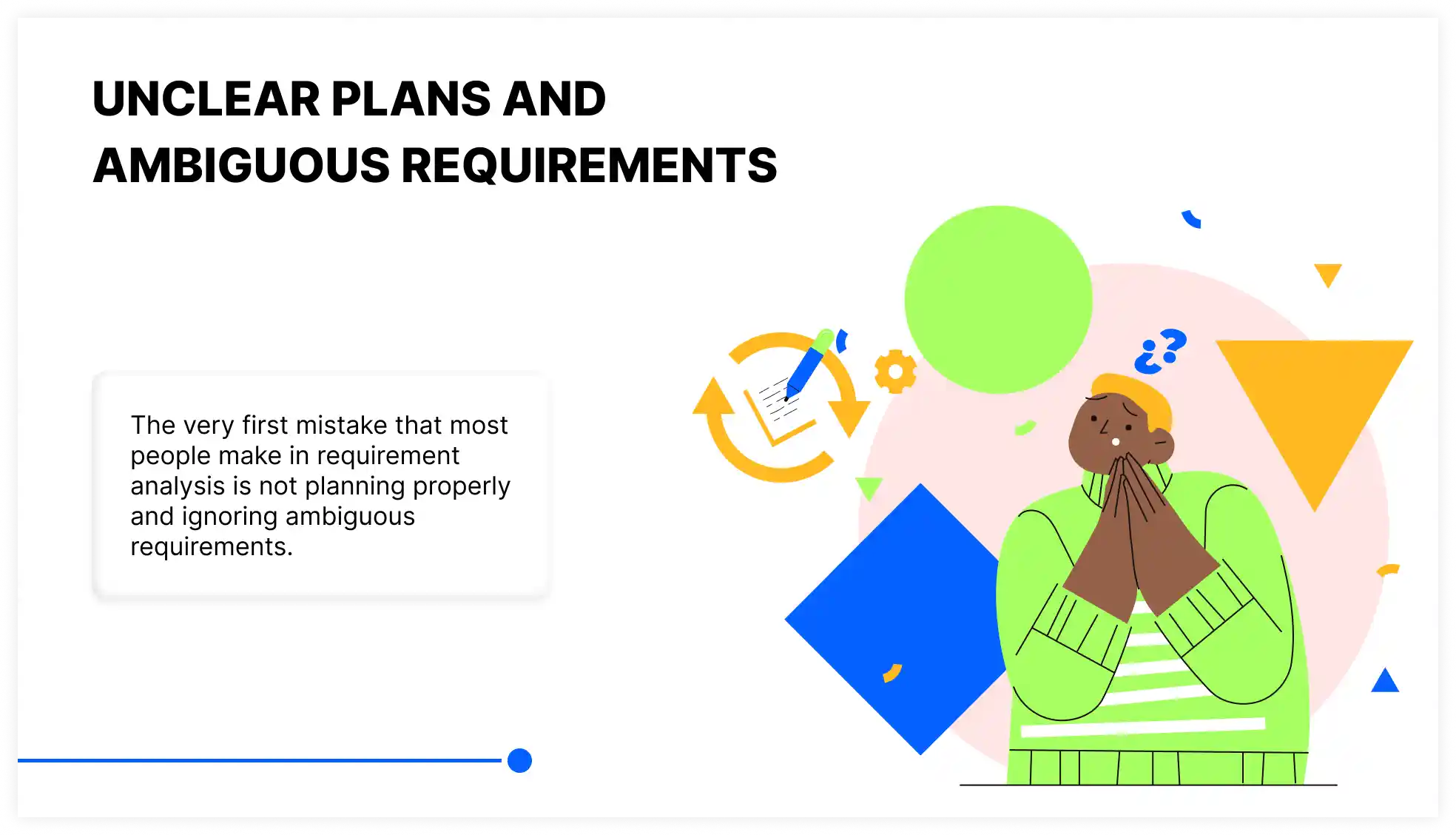
Solution:
To overcome this problem try to use structured and consistent language with functional-specific criteria. Try Format writing such as user stories, and use cases to ensure precision and clarity.
Furthermore, incorporating techniques like smart criteria (Specific, Measurable, Achievable, Relevant, Time-bound), MoSCoW prioritization (Must, Should, Could, Won't), and clear acceptance can help define requirements in an efficient manner.
Scope Creep Issues and Frequent Change Requests
Scope creep is when additional changes and ideas are given once the requirements are gathered and in working phases.
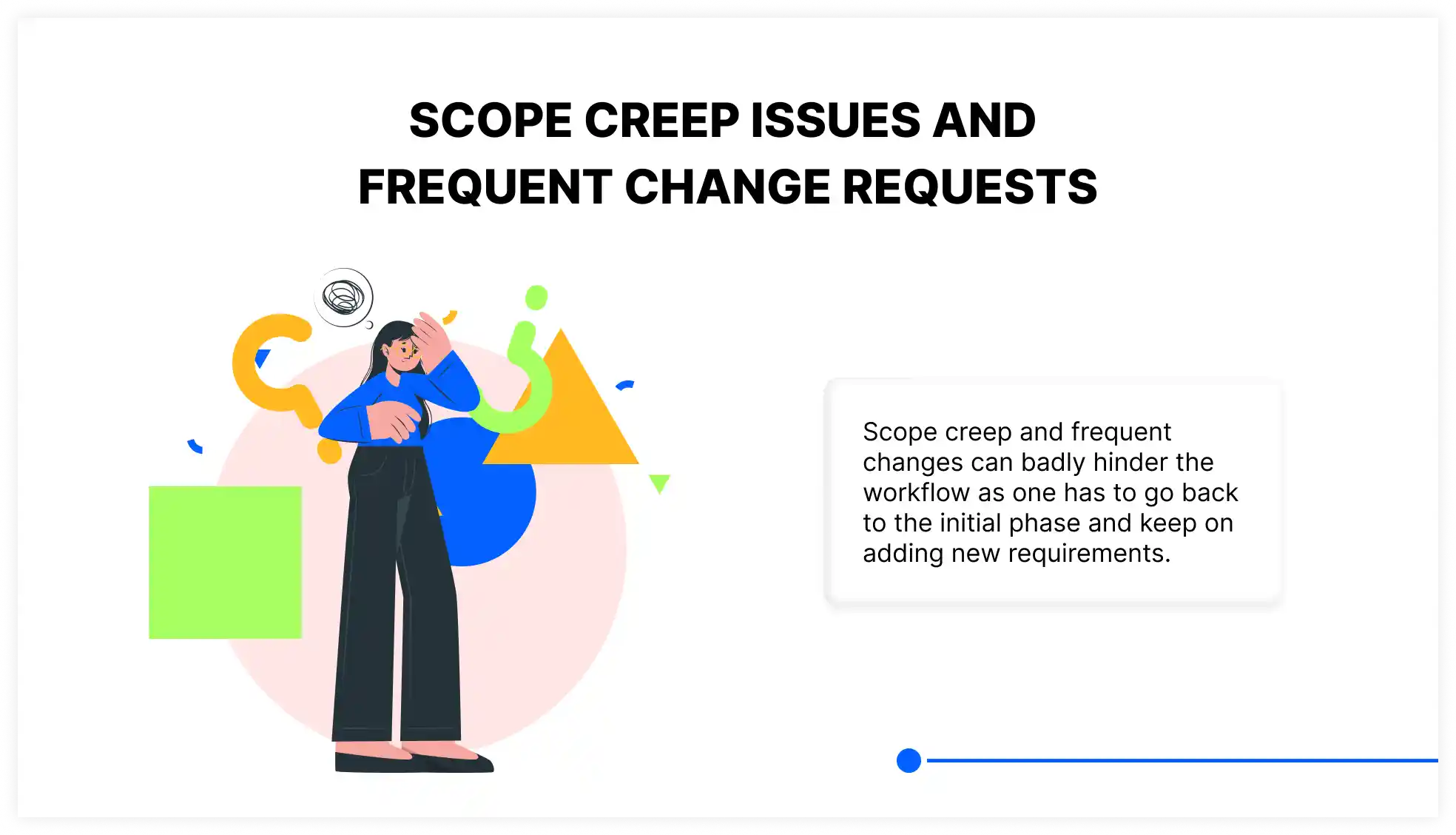
It is one of the most frustrating and annoying problems as it happens after all the planning is done. Scope creep and frequent changes can badly hinder the workflow as one has to go back to the initial phase and keep on adding new requirements.
While few changes are important, too many changes might not be good as they disrupt the budget, project schedule, and resources.
Solution:
The easiest way to navigate this problem is to establish a transparent and agreed-upon scope and vision for the project. Try to document any assumptions and potential risks when gathering requirements.
In addition to that, make sure to have a formal and clear management process that outlines how change requests will be handled, evaluated, and approved. The process should also define how all the changes will be communicated to stakeholders and team members.
Poor Stakeholder Engagement and Lack of Communication
Poor stakeholder involvement can result in missing, incomplete, and broken requirements. Plus, lack of communication with stakeholders such as users, sponsors, and managers, can negatively impact your project end goals.
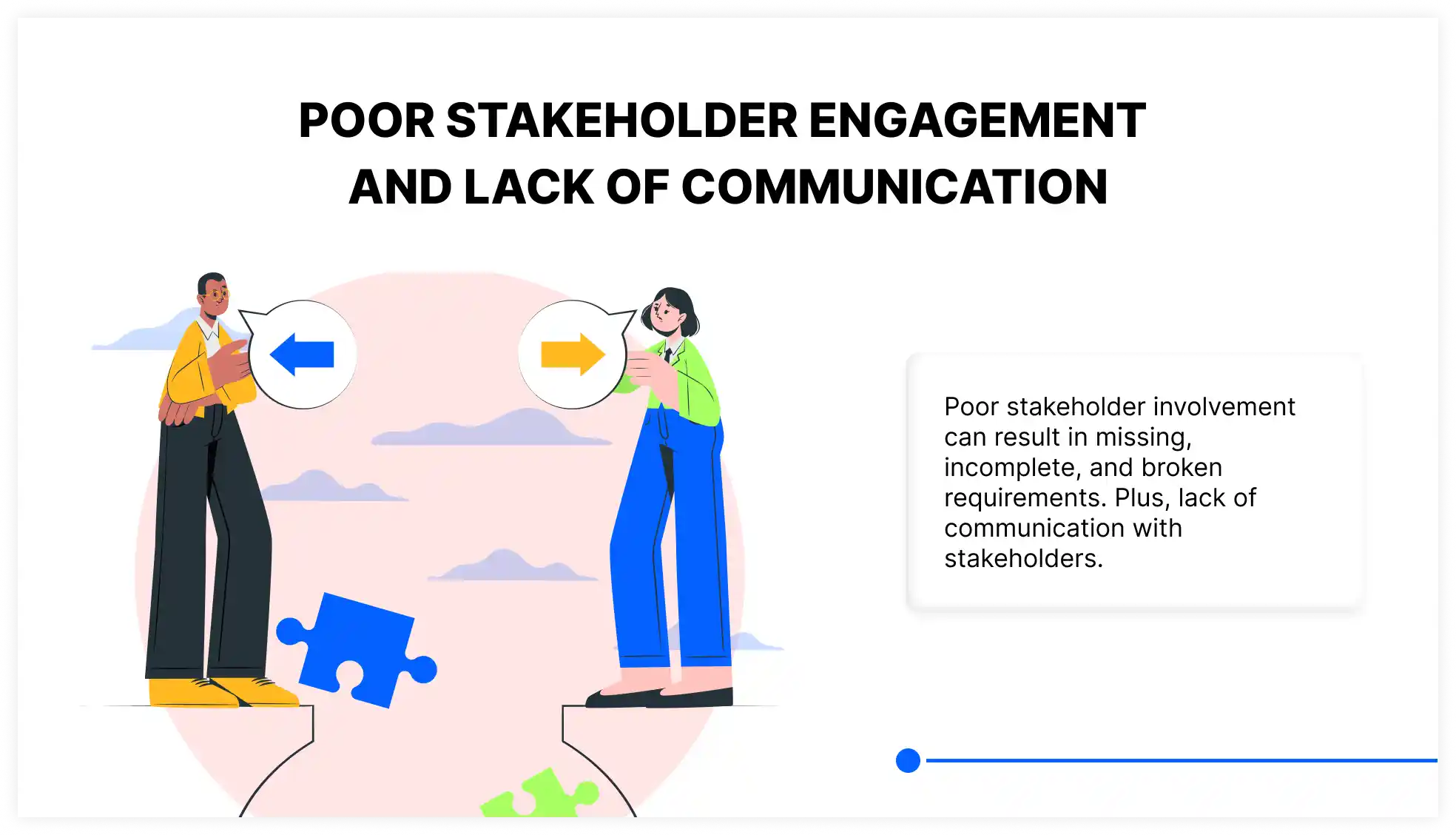
Solution:
To avoid this issue, actively engage stakeholders throughout the process using methods like interviews, surveys, workshops, and prototyping.
Use tools like requirements traceability matrices, management software, or collaboration platforms to document, organize, and share requirements effectively. Frequent and clear communication is key to ensuring alignment and successful project outcomes.
Unimportant and Conflicting Requirements
Another common mistake in the requirement analysis phase is when incompatible, conflicting, and unrealistic requirements are introduced.
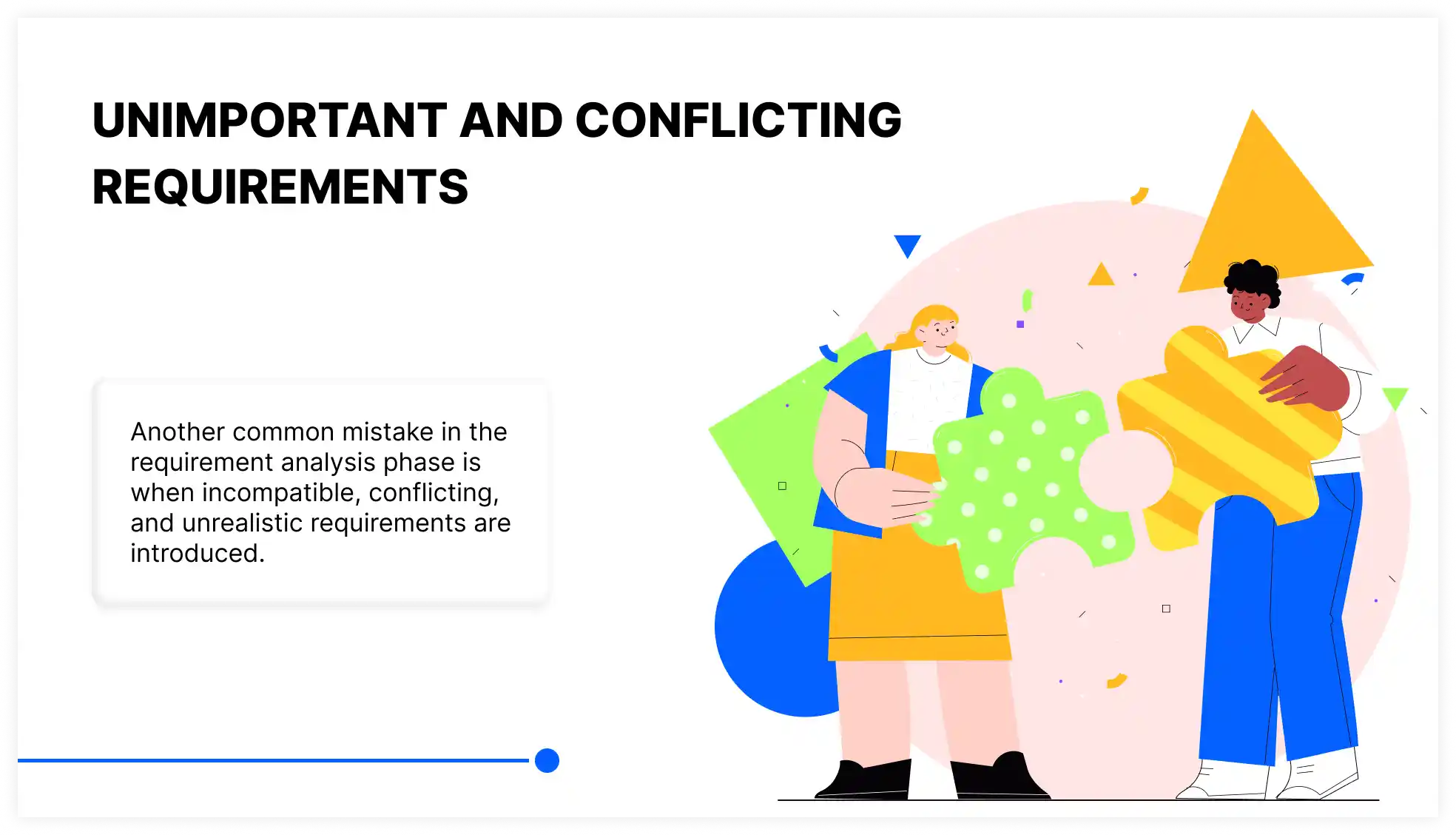
These requirements poorly affect the project goals and technical capabilities. They also lead to inefficiencies, resource wastage, technical challenges, and compromised performance or usability.
Solution:
To avoid this mistake efficiently make sure to conduct a comprehensive feasibility analysis and risk assessment. It helps identify dependencies, trade-offs, and assumptions early on.
Additionally, techniques like modeling, simulation, or testing should be employed to assess the technical and operational feasibility of the requirements. These methods can also help uncover and resolve any conflicts or inconsistencies before they impact the project.
Insufficient Verification and Validation of Requirements
When the requirements in the requirement analysis phase lack proper validation and verification, it creates a major problem for the overall project.
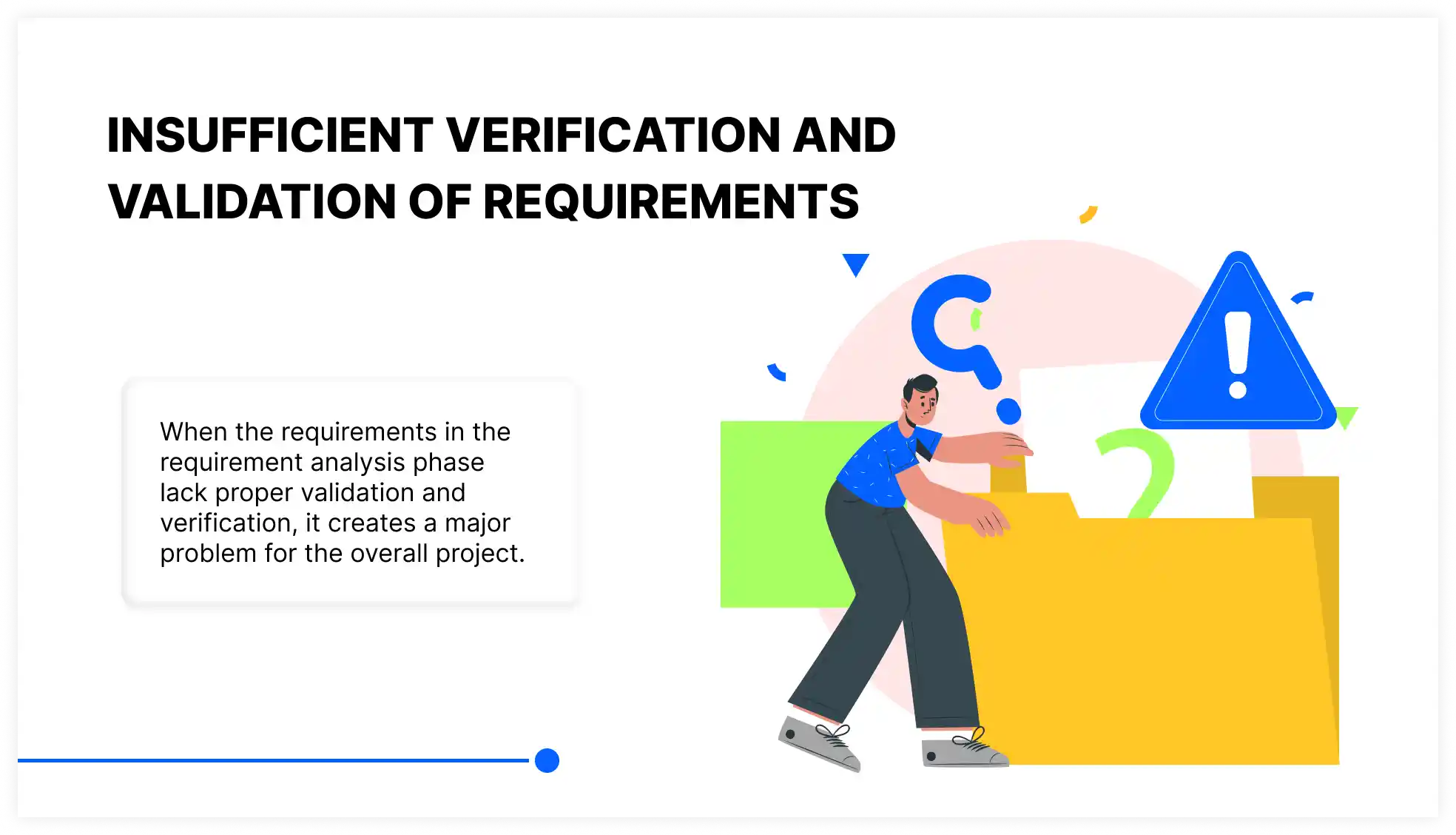
Validation and verification are important aspects of any project. Validation ensures the requirements are aligned with the needs and expectations of users. Whereas the verification process ensures that the requirements are accurate, detail-oriented, and consistent.
Solution:
To avoid this pitfall one must try to perform validation and verification throughout the requirement analysis phase rather than whole at the end. Performing these activities continuously will allow for fewer mistakes and issues.
Using techniques such as reviews, inspections, walkthroughs, audits, or testing can help assess the quality and accuracy of your requirements. All of which help you detect problems early on in the analysis phase.
Poor Documentation and Lack of Traceability
One of the most talked about problems in the requirement analysis phase is improper documentation and traceability. It allows for confusion, redundant work, and loss of important information.
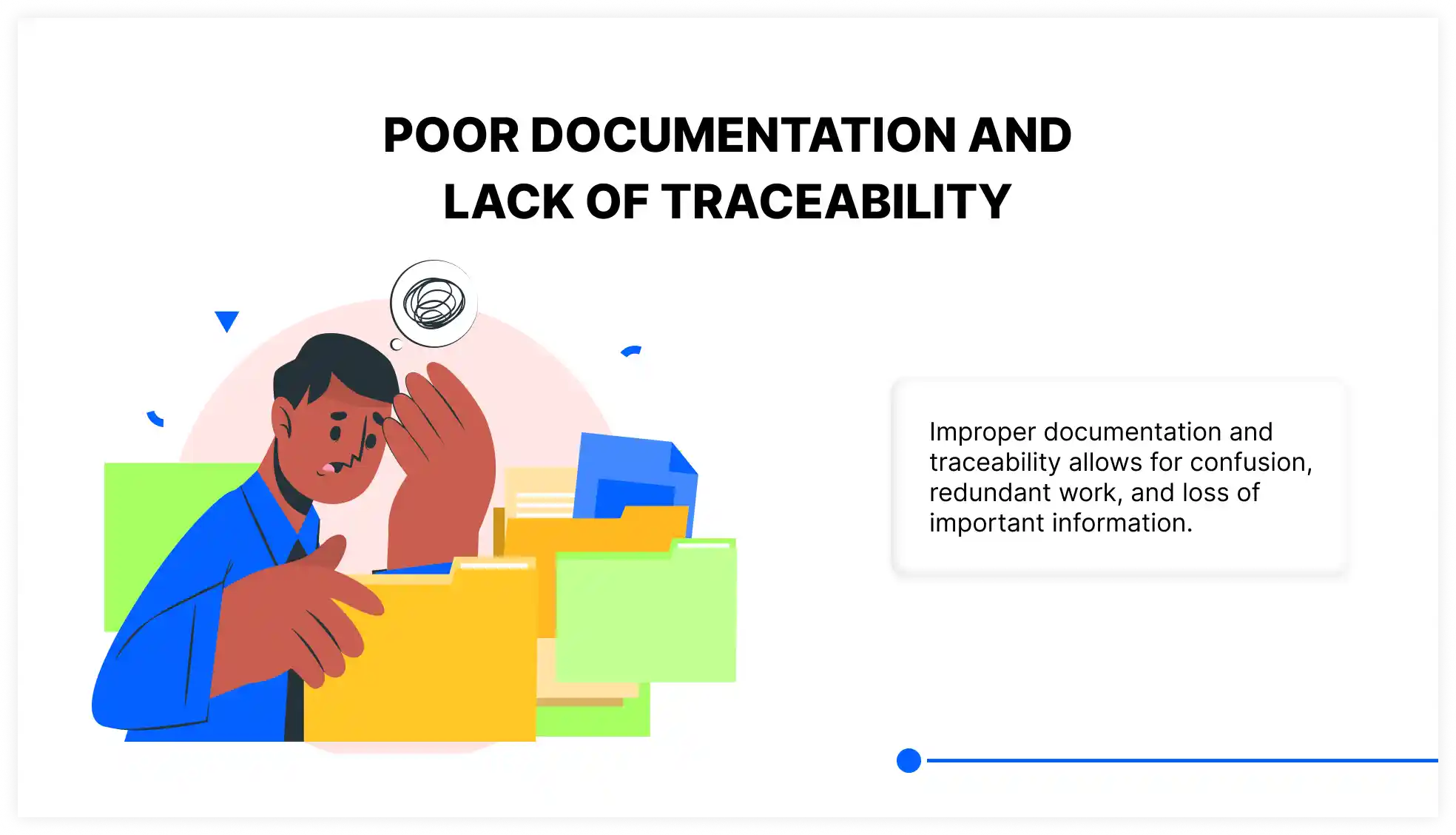
Traceability refers to the ability to track each requirement from its origin through to its implementation and testing stages.
Solution:
To prevent this issue from occurring you can systematically record and organize requirements in a way that is both clear and easily accessible.
It’s important to adopt a consistent format for documenting requirements, such as using standardized templates, diagrams, or tables.
Additionally, utilizing tools like requirements traceability matrices, requirements management platforms, or version control systems can improve the ability to manage, document, and track requirements throughout the entire project lifecycle.
Final Thoughts
Requirement analysis is a crucial step for any project's success. Mistakes in this phase can lead to delays, confusion, and wasted resources. By avoiding common pitfalls like poor communication, unclear objectives, and unrealistic expectations, one can ensure a smooth project management process.
Remember to engage stakeholders, prioritize features, and manage changes carefully. Taking the time to address these issues early will help set your project on the path to success.



















